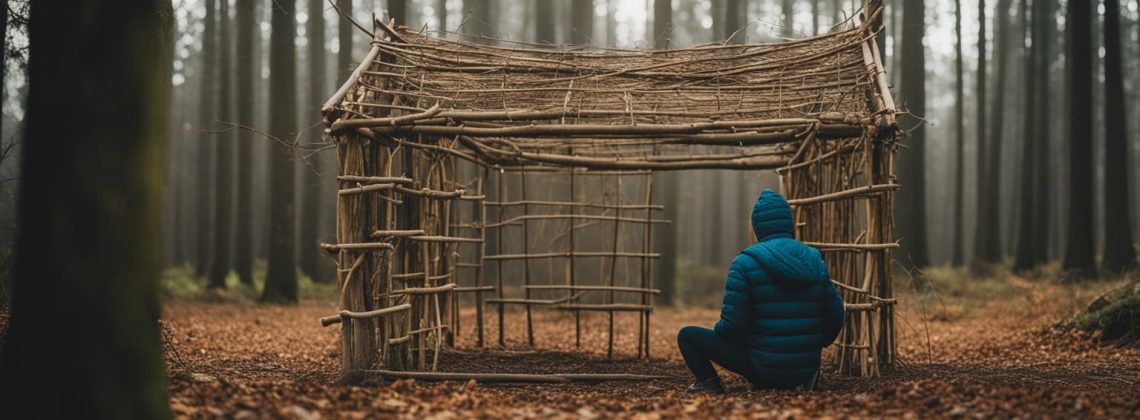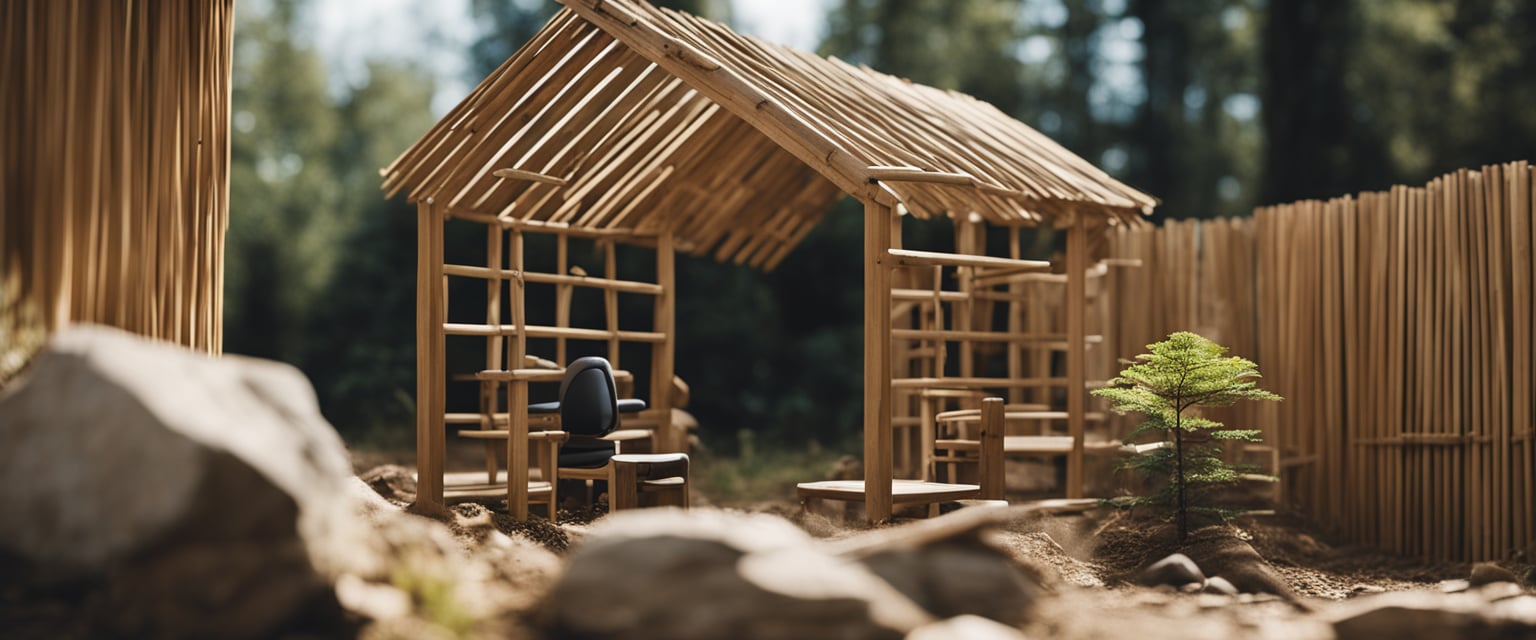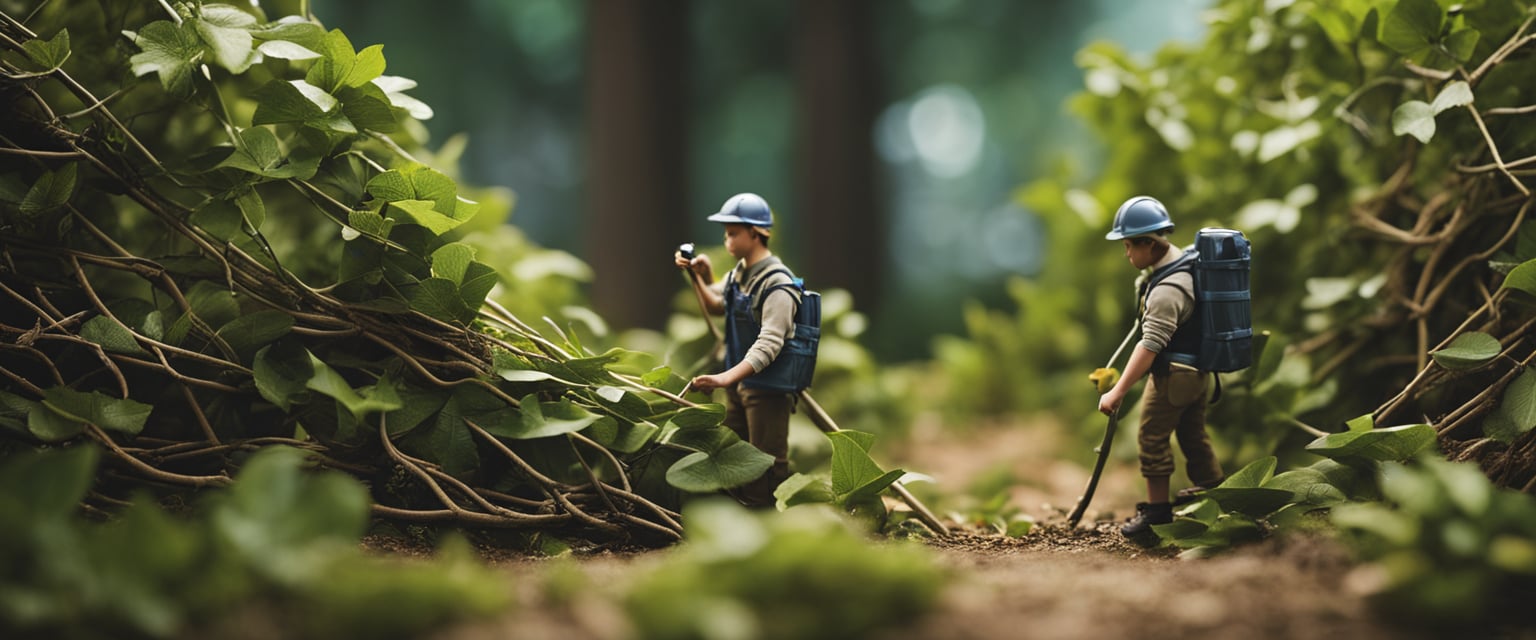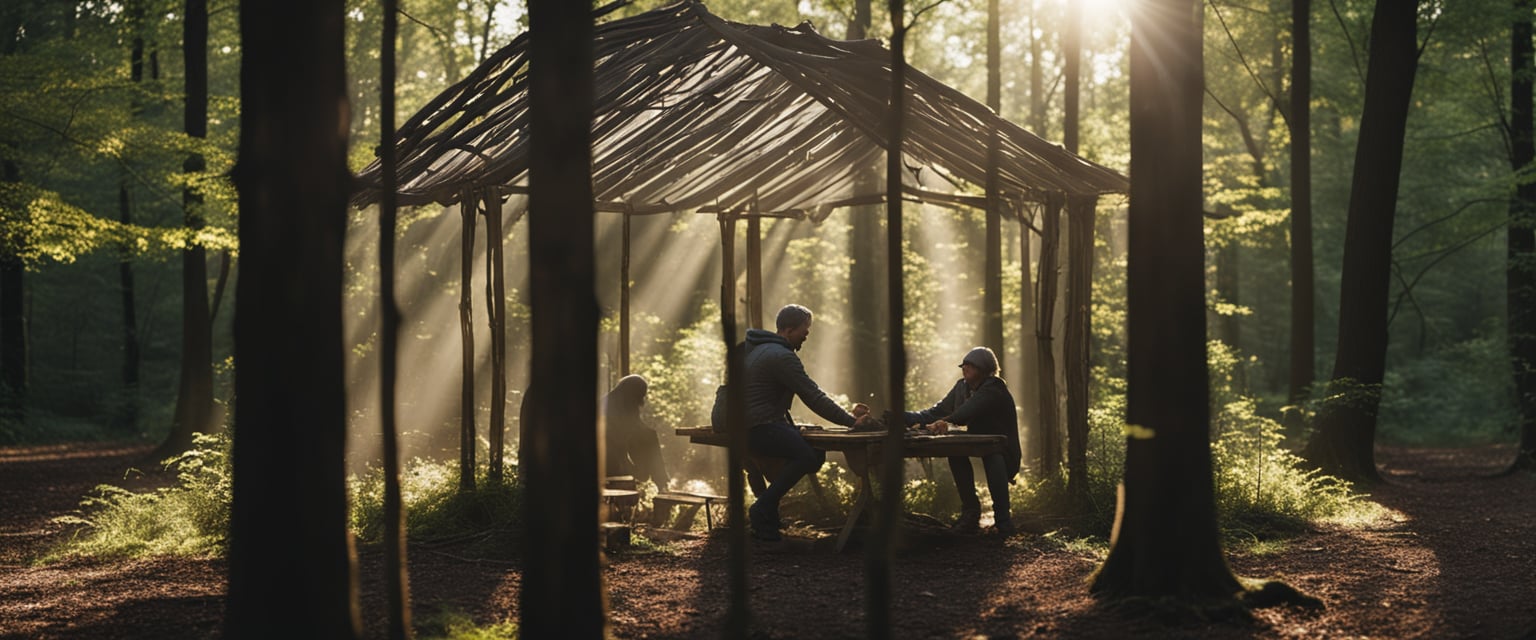
Building a shelter is one of the most important skills for survival in the great outdoors. Whether you are lost in the wilderness or stranded in a disaster zone, having a shelter can mean the difference between life and death. In this step-by-step guide, you will learn everything you need to know about building a shelter in any situation.
Choosing the right location is crucial when building a shelter. You need to find a spot that is dry, flat, and away from any potential hazards like falling rocks or dead limbs. You also want to be near a water source for easy access to hydration. Once you have found the perfect spot, you can start designing your shelter.
Designing your shelter involves deciding on the type of shelter you want to build and gathering the necessary materials. You can choose from a variety of shelter designs, including lean-tos, debris huts, and A-frame shelters. Gathering materials involves collecting natural resources like branches, leaves, and grass. Once you have everything you need, you can start constructing your shelter using various techniques.
Key Takeaways
- Choosing the right location is crucial when building a shelter.
- Designing your shelter involves deciding on the type of shelter you want to build and gathering the necessary materials.
- Construction techniques and maintaining your shelter are important to ensure its effectiveness and your safety.
Choosing the Right Location

When it comes to building a shelter, choosing the right location is crucial to your survival. Here are some factors to consider when assessing potential locations:
Assessing Terrain
The terrain of your shelter location is an important factor to consider. Look for a flat, dry area that is elevated above the surrounding terrain to prevent flooding. Avoid areas that are prone to landslides or rockfalls. If possible, choose a location with natural shelter, such as a cave or overhanging rock formation.
Considering Climate
The climate of your shelter location is another important factor to consider. If you’re in a hot climate, look for a location with plenty of shade and ventilation. In colder climates, look for a location that is sheltered from the wind and has plenty of insulation. Avoid areas that are prone to extreme weather conditions, such as flooding or avalanches.
Water Source Proximity
Proximity to a water source is crucial when choosing a shelter location. Look for a location that is close to a reliable water source, such as a river or stream. Avoid areas that are too close to the water source, as they may be prone to flooding. Make sure the water source is safe to drink and easily accessible.
By considering these factors, you can choose a shelter location that is safe, secure, and suitable for your survival needs.
Designing Your Shelter

When building a survival shelter, it is important to design a structure that will provide adequate protection from the elements. This section will provide you with some guidance on how to design a shelter that is both sturdy and effective.
Selecting Materials
The first step in designing a shelter is to select the appropriate materials. You will want to choose materials that are readily available in your environment, such as branches, leaves, and grass. It is important to choose materials that are strong enough to withstand wind and rain, but also lightweight enough to transport easily.
Blueprinting Structure
Once you have selected your materials, you will need to blueprint the structure of your shelter. This will involve deciding on the shape and size of your shelter, as well as the placement of support beams and other structural elements.
One popular shelter design is the lean-to, which involves propping a large branch against a tree and using smaller branches to create a sloping roof. Another option is the A-frame shelter, which involves constructing two large frames and then joining them together to create a peaked roof.
When designing your shelter, it is important to consider the weather conditions in your area. If you live in an area with heavy rain or snow, you may want to consider a design with a steeper roof to prevent water from pooling on top.
Overall, when designing your shelter, it is important to be creative and resourceful. With the right materials and a solid blueprint, you can create a shelter that will keep you safe and protected in even the harshest of environments.
Gathering Materials

When building a shelter, you need to gather materials that will help you create a sturdy and secure structure. These materials can come from natural resources or repurposed items. Here are some options to consider:
Natural Resources
Nature provides a wealth of resources for building a shelter. You can use materials such as branches, leaves, grass, and bark to create a shelter that blends in with the environment. Here are some things to keep in mind when gathering natural resources:
- Look for materials that are dry and sturdy. Wet or rotting materials can compromise the integrity of your shelter.
- Use materials that are abundant in your area. This will make it easier to gather enough resources to build a shelter.
- Consider the size and shape of the materials. You want to use materials that are long and straight for the frame of your shelter, and materials that are flexible for the roof.
Repurposed Items
In addition to natural resources, you can also use repurposed items to build a shelter. These items can come from your own gear or from the environment around you. Here are some options to consider:
- Tarps or ponchos: These can be used as a roof for your shelter to protect you from the elements.
- Paracord or rope: This can be used to tie together the frame of your shelter and secure the roof.
- Clothing or blankets: These can be used as insulation to keep you warm inside your shelter.
- Fallen trees or logs: These can be used as a base for your shelter, or as a frame for the walls.
By using a combination of natural resources and repurposed items, you can build a shelter that will keep you safe and comfortable in a survival situation.
Construction Techniques
Foundation Setting
Before you start building your survival shelter, you need to make sure that you have a solid foundation. If you can, try to find a flat and dry location. This will make it easier to build your shelter and will also help protect you from the elements. If you can’t find a flat location, you may need to clear the area of any rocks or debris.
Once you have found a suitable location, you can start building your foundation. You can use rocks, logs, or other materials to create a solid base for your shelter. Make sure that your foundation is level and stable before you start building the framework.
Framework Building
The framework of your shelter is the most important part of the construction process. You can use a variety of materials to build your framework, including branches, logs, and saplings. Make sure that you choose materials that are strong and sturdy.
To build your framework, start by creating a basic structure. You can use a simple A-frame design or a more complex design depending on your needs. Once you have your basic structure in place, you can start adding branches and other materials to create a more solid structure.
Insulation and Waterproofing
Once you have your framework in place, you need to add insulation and waterproofing to your shelter. You can use a variety of materials for insulation, including leaves, grass, and other natural materials. Make sure that you add enough insulation to keep you warm and dry.
To waterproof your shelter, you can use a variety of materials, including plastic, leaves, or bark. Make sure that you cover your shelter completely to keep out the rain and wind.
In conclusion, building a survival shelter requires careful planning and construction techniques. By following these steps, you can create a shelter that will protect you from the elements and increase your chances of survival.
Maintaining Your Shelter

Once you have built your survival shelter, it is important to maintain it to ensure that it remains a safe and reliable place to stay. Here are some tips for maintaining your shelter:
Regular Checks
You should perform regular checks on your shelter to make sure that it is still in good condition. Check for any signs of wear and tear, such as holes or tears in the fabric or damage to the frame. You should also check for any signs of water damage, such as mold or mildew.
Repair and Reinforcement
If you notice any damage to your shelter, it is important to repair it as soon as possible. This will prevent the damage from getting worse and ensure that your shelter remains safe and reliable. You can use a variety of materials to repair your shelter, such as duct tape or a sewing kit.
In addition to repairing any damage, you should also reinforce your shelter to make it more sturdy and durable. This can include adding extra support to the frame, reinforcing the seams, and adding extra layers of fabric to protect against the elements.
By following these tips, you can ensure that your survival shelter remains a safe and reliable place to stay, no matter what challenges you may face in the wilderness.
Frequently Asked Questions
What are the essential steps to constructing a survival shelter in the wilderness?
When building a survival shelter in the wilderness, there are a few essential steps you should follow. First, you need to choose a suitable location for your shelter. Look for a spot with an abundance of natural resources such as debris, sticks, and ridgepoles. Second, decide on the type of shelter you want to build and gather the necessary materials. Third, construct the shelter using the step-by-step guide that works best for you. Finally, make sure to waterproof the shelter and add any necessary finishing touches.
What are the best materials to use when building a shelter with natural resources?
When building a shelter with natural resources, it’s best to use materials that are readily available in the area. Some of the best materials to use include dead leaves, grass, moss, ferns, sticks of different sizes, and ridgepoles. These materials are lightweight, easy to find, and can provide good insulation and protection from the elements.
How can I waterproof a survival shelter in a forested area?
To waterproof a survival shelter in a forested area, you can use natural materials such as leaves, bark, and branches. Cover the shelter with a layer of leaves or bark to prevent rainwater from seeping through. You can also use a tarp or plastic sheeting if you have it available. Make sure to secure the edges of the tarp or plastic sheeting to prevent water from getting in.
What is the most efficient shape for a survival shelter to ensure stability and protection?
The most efficient shape for a survival shelter is a triangular or A-frame shape. This shape provides stability and protection from the wind and rain. It’s also easy to construct using natural materials such as branches, sticks, and leaves.
How can I create a durable, long-term shelter in the wilderness without modern tools?
To create a durable, long-term shelter in the wilderness without modern tools, you need to use natural materials that are strong and durable. Some of the best materials to use include logs, bark, and large branches. You can use these materials to construct a sturdy frame for your shelter. Once you have the frame in place, you can cover it with natural materials such as leaves, grass, and moss to provide insulation and protection from the elements.
What are the key considerations when choosing a location for building a simple survival shelter?
When choosing a location for building a simple survival shelter, there are a few key considerations to keep in mind. Look for a spot that is dry and well-drained to prevent flooding. Choose a location that is protected from the wind and rain, such as under a tree canopy. Look for natural resources such as debris, sticks, and ridgepoles that you can use to construct your shelter. Finally, make sure the location is easily accessible and not too far from a water source.

Leave a Reply